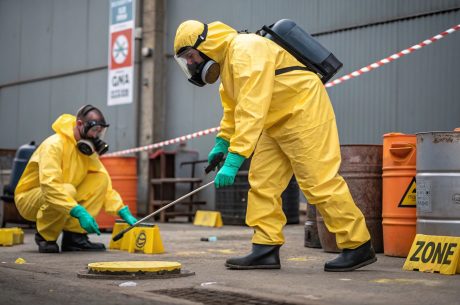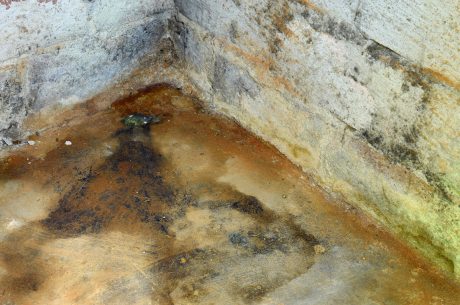Water damage can strike any property — residential or commercial — without warning. From burst pipes and appliance leaks to flash floods and roof failures, the effects can be both financially and emotionally devastating.
According to professional water damage statistics, incidents are rising across the United States, costing property owners billions each year. Understanding the trends behind these numbers helps homeowners, property managers, and restoration professionals make better prevention and response decisions.
Whether you live in Cary, NC — a region prone to seasonal storms and humidity — or anywhere else in the U.S., knowing the facts about water damage can help protect your property and wallet.
The Growing Cost of Water Damage in the U.S.
Recent water damage statistics in the U.S. show that both the frequency and financial impact of these incidents are increasing.
- 1 in 67 insured homes files a water damage or freezing claim each year (Insurance Information Institute).
- Water damage ranks second only to wind and hail as the most common cause of homeowner insurance claims.
- The average water damage claim is approximately $11,000, and large losses over $500,000 have doubled since 2015.
This steady climb in claims — and costs — underscores a key fact: water damage isn’t just a seasonal issue. It’s a persistent, nationwide problem that affects families, landlords, and businesses alike.

Why the Costs Keep Rising
There are several reasons insurance claims for water damage have grown more expensive:
- Aging infrastructure: Many U.S. homes have plumbing, roofing, and drainage systems that are decades old. Corroded pipes, weakened seals, and worn roofing materials make leaks and failures more likely.
- Extreme weather: Increasingly severe storms, heavy rainfall, and sudden freezes have led to more burst pipes, roof leaks, and localized flooding. Events once considered rare are now more frequent across many regions.
- Deferred maintenance: Homeowners often delay small repairs or miss hidden leaks until they become serious. A slow drip can damage walls, flooring, and insulation — turning a minor fix into a major restoration project.
- Inflation and material costs: The price of building materials, labor, and restoration supplies has climbed steadily. As a result, even routine repairs and cleanup now cost significantly more than they did just a few years ago.
Together, these factors explain why water damage statistics continue to show a steady rise in both the frequency and cost of claims nationwide.
Common Causes Behind Water Damage Claims
Professional water damage statistics show that the majority of property losses are caused by internal system failures rather than natural disasters.
1. Plumbing Supply System Failures
Plumbing supply line failures account for nearly 48% of all water loss incidents, making them the leading cause of interior water damage. Over time, pipes can crack, corrode, or burst due to aging, pressure changes, or freezing temperatures. When this happens, hundreds of gallons of water can escape in minutes, flooding walls and floors.
The average cost per incident is around $5,000 after insurance deductibles, but expenses can climb much higher if leaks go unnoticed. Studies reflected in national water damage statistics show that about 65% of plumbing failures result from deterioration or freezing — issues that can often be prevented with regular inspections, pipe insulation, and timely replacement.
2. Appliance Leaks
Leaks from everyday appliances are one of the most underestimated causes of property damage. Washing machine hoses typically fail after about 8–9 years, and water heaters have an average 75% failure rate before the 12-year mark, often due to corrosion or sediment buildup. Even a slow, hidden leak can cause significant flooring and subfloor damage over time.
Replacing rubber hoses with braided stainless-steel ones, inspecting fittings annually, and flushing water heaters regularly can drastically reduce the risk of failure and extend appliance lifespan.
3. Roof Leaks and Clogged Gutters
The roof and gutter system protect a home from rain and runoff — but when they fail, water quickly finds its way indoors. Damaged shingles, worn flashing, or blocked gutters allow rainwater to seep into insulation and drywall.
In humid regions like Cary, NC, this trapped moisture can lead to fast mold growth and gradual structural decay. Seasonal roof inspections and gutter cleaning are simple ways to prevent expensive repairs.
4. Foundation and Drainage Issues
Poor exterior drainage channels rainwater toward foundations, increasing the risk of basement flooding and long-term foundation weakening. Over time, moisture buildup can lead to cracks, mold, and shifting structures.
Proper grading, clean drains, and functional sump pumps can protect your home’s foundation. Addressing drainage issues early is one of the most effective — and affordable — ways to prevent serious water damage.

How Homeowners Perceive Water Damage Risks
According to professional water damage statistics and national insurance surveys, many U.S. homeowners still underestimate the true risks, frequency, and financial impact of water damage.
- Only 20% of respondents said they perform regular preventive maintenance.
- 90% believed they could detect water issues on their own — yet most failed to do so until visible damage appeared.
- Many homeowners assumed repair costs under $5,000, when in reality, the average is over $10,000.
This gap between perception and reality highlights the importance of education, early detection, and professional inspections.

Water Damage Trends in Cary, NC
While national statistics provide a big-picture view, local patterns matter. In Cary, North Carolina, the combination of humid summers, frequent thunderstorms, and aging plumbing systems makes the region especially vulnerable.
Common water damage calls in Cary include:
- Roof leaks after heavy rainfall or hurricanes: Intense summer storms and remnants of Atlantic hurricanes can loosen shingles, damage flashing, and allow water to seep into attics and ceilings.
- Overflowing gutters and poor yard drainage: Clogged gutters or flat grading often cause water to pool around foundations, leading to basement seepage and soil erosion.
- Burst pipes during cold snaps: While Cary’s winters are generally mild, sudden freezes can cause uninsulated pipes to burst — especially in exterior walls, garages, or crawlspaces.
- Basement and crawlspace moisture issues: High humidity and heavy rainfall create persistent dampness under homes, promoting mold growth and wood rot if ventilation and drainage are inadequate.
Local experts at PuroClean Disaster Response Services in Cary, NC report that proactive maintenance — such as annual plumbing inspections and humidity control — plays a key role in improving local water damage statistics by significantly reducing the likelihood of costly property damage.
How to Prevent Water Damage Before It Happens
You can’t stop every weather event, but you can prevent many of the most common causes of water damage with a few practical steps:
- Inspect pipes and hoses regularly. Replace washing machine and dishwasher hoses every 5–7 years.
- Insulate plumbing in cold weather. Use foam sleeves to prevent pipe freezing in basements or crawlspaces.
- Clean gutters twice a year. Clogged gutters cause roof and foundation leaks.
- Install water leak sensors. Smart sensors detect hidden leaks early, minimizing damage.
- Know your main shut-off valve. Make sure everyone in the household can locate and operate it.
- Schedule professional maintenance. Have certified technicians inspect your water heater, plumbing, and HVAC systems annually.
Proactive maintenance not only prevents damage — it can also reduce insurance premiums and increase property value over time.

Why Professional Restoration Matters
When water damage does occur, speed and expertise are critical. Professional water damage restoration companies like PuroClean follow industry standards from the IICRC (Institute of Inspection, Cleaning and Restoration Certification) to ensure safety, hygiene, and structural integrity.
Here’s what a professional team typically handles:
- Moisture mapping and leak detection: Specialists use advanced sensors and infrared cameras to locate hidden moisture behind walls, under flooring, and inside ceilings — ensuring no damp spots are left untreated.
- Water extraction and structural drying: High-powered pumps and industrial air movers remove standing water and dry building materials quickly to prevent further damage or mold growth.
- Dehumidification and odor removal: Commercial-grade dehumidifiers eliminate lingering moisture from the air, while air scrubbers and odor-neutralizing agents restore a clean, healthy indoor environment.
- Mold prevention and remediation: If mold has started to form, certified technicians safely contain and remove it, disinfecting affected areas to prevent recurrence.
- Insurance claim assistance: Restoration professionals document damage, provide itemized reports, and coordinate directly with insurance adjusters to simplify the claims process for property owners.
By working with a trusted local company in Cary, NC, property owners gain access to specialized equipment, insurance coordination, and experienced technicians who can restore properties efficiently and safely.
Why Choose PuroClean For Your Water Damage Restoration Services
The latest professional water damage statistics show that water-related losses are more common, more costly, and more preventable than many homeowners realize. Whether you’re managing a single-family home or a commercial property in Cary, NC, the key is awareness and preparation.
If you suspect a leak, notice damp spots, or experience a flood — don’t wait.
Contact PuroClean Disaster Response Services in Cary, NC at (919) 481-4600 for immediate assistance. Our certified technicians are available 24/7 to assess, restore, and protect your property.
FAQs – Water Damage Statistics
Q1: How common is water damage in U.S. homes?
About 1 in 50 homes experiences water damage or freezing each year, making it one of the top causes of insurance claims nationwide.
Q2: What’s the average cost to repair water damage?
Depending on severity, repairs can range from $3,000 to over $55,000. Costs increase significantly if mold or structural repairs are required.
Q3: Are all types of water damage covered by insurance?
Not always. Most standard policies cover sudden or accidental leaks but exclude gradual damage or flooding from outside sources. Flood insurance is often a separate policy.
Q4: How quickly should I act after discovering water damage?
Immediately. Mold growth can begin within 24–48 hours, and delaying cleanup can void insurance coverage.
Q5: How can homeowners in Cary, NC, minimize risk?
Schedule seasonal inspections, insulate exposed pipes, and contact PuroClean Disaster Response Services for a preventive consultation or emergency response.
Sources:


